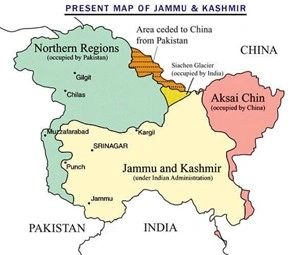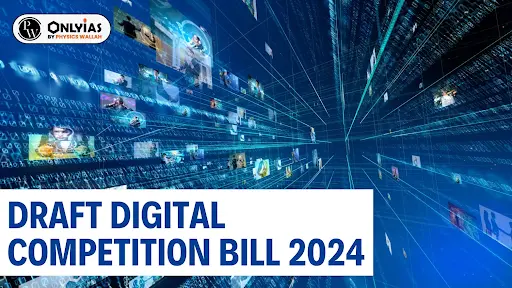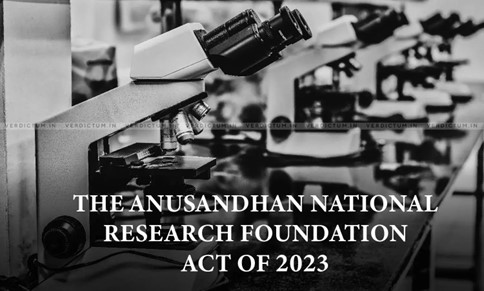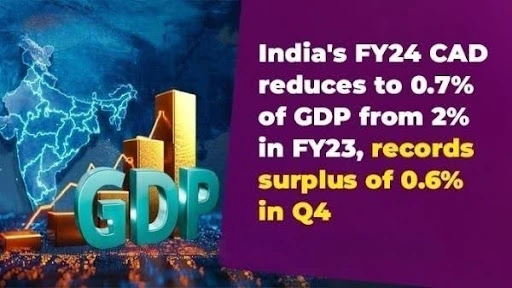Friday, 12th July 2024
Vizhinjam port welcomes its first mothership
Why in the News?
- India's inaugural deep-water transshipment port, Vizhinjam International Seaport near Thiruvananthapuram, celebrated the arrival of its first mothership—a large cargo vessel pivotal for transshipment operations.
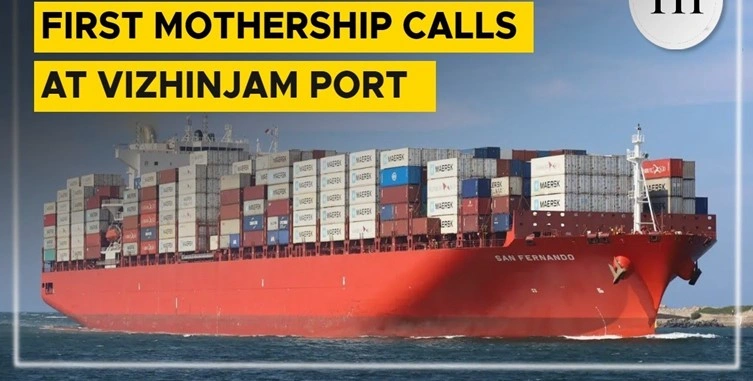
- The MV San Fernando, laden with 2,000 containers, received a grand reception at the port, marking a trial run before its scheduled commencement of commercial activities.
Deepwater Transshipment Port:
- Deepwater Port Definition:
- A deepwater port is a manmade structure designed for transporting, storing, or handling oil or natural gas.
- These ports are located beyond state seaward boundaries and may include pipelines, service platforms, mooring buoys, and pumping stations.
- Transshipment Port Definition:
- A transshipment port facilitates the offloading and reloading of goods onto different ships for onward transportation to their final destinations.
Why does India need a container transshipment port?
- Lacks infrastructure to deal with ultra-large container ships:
- India's 13 major ports currently lack the necessary landside mega-port and terminal infrastructure to accommodate ultra-large container ships effectively.
- As a consequence, nearly 75% of India's transshipment cargo is processed at ports located outside the country, notably in Colombo, Singapore, and Klang.
- In the fiscal year 2021-22, India handled a total transshipment cargo volume of about 4.6 million TEUs (twenty-foot equivalent units).
- Out of this amount, approximately 4.2 million TEUs were managed at international ports rather than domestically within India's port facilities.
- Benefits of Establishing a Transshipment Port:
- Establishing such ports can lead to significant benefits, including foreign exchange savings, increased foreign direct investment, enhanced economic activity at other Indian ports, and the development of ancillary logistics infrastructure.
- Economic Impact and Allied Businesses:
- A deepwater container transshipment port has the potential to attract a substantial portion of India's container transshipment traffic currently diverted to Colombo, Singapore, and Dubai.
- This development can spur economic growth, create numerous job opportunities, and foster related businesses such as ship chandlery, ship repair, logistics services, warehousing, and bunkering.
- Increased Economic Activities:
- A deepwater container transshipment port can attract a large share of the container transshipment traffic.
- Currently, this is being diverted to Colombo, Singapore and Dubai.
- It can also ensure India’s economic development and open up immense job opportunities.
- A deepwater container transshipment port can attract a large share of the container transshipment traffic.
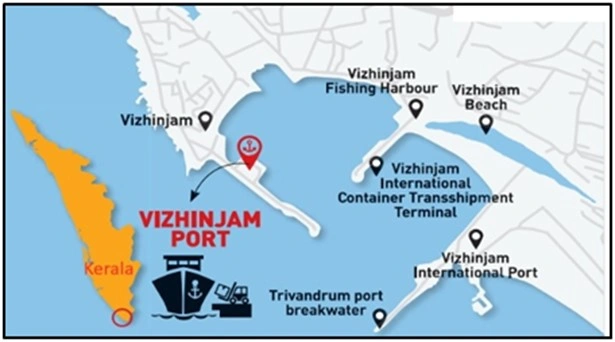
Vizhinjam International Seaport Project:
- Location and Construction:
- Located in Vizhinjam near Thiruvananthapuram, Kerala, the transshipment deepwater multipurpose seaport project is being constructed by Adani Ports and SEZ Private Limited.
- DBFOT Model:
- It follows a Design, Build, Finance, Operate, and Transfer (DBFOT) model, a type of Public-Private Partnership (PPP) where the private partner undertakes the responsibility for:
- Designing
- Building
- Financing
- Operating
- Transferring the project back to the public sector.
- This model is commonly used for large-scale infrastructure projects.
- Investment and Funding: Under the agreement:
- Adani Group is investing Rs 2,454 crore.
- Rs 1,635 crore in viability gap funding is provided by state and central governments.
- The Kerala government has allocated 500 acres of land for the project.
- Duration of Agreement:
- The DBFOT agreement spans 40 years initially, with provisions for an extension of another 20 years.
- It follows a Design, Build, Finance, Operate, and Transfer (DBFOT) model, a type of Public-Private Partnership (PPP) where the private partner undertakes the responsibility for:
Key Features of Vizhinjam Port:
- India’s inaugural international deepwater transshipment port.
- Natural depth exceeds 18 metres, extendable to 20 metres, crucial for accommodating large vessels and motherships.
- Designed for handling container transshipment, multi-purpose, and break-bulk cargo, potentially reducing container movement costs.
- Strategically located ten nautical miles from the international shipping route, competing with ports like Colombo, Singapore, and Dubai for transshipment traffic.
- Initial capacity of one million TEU (twenty-foot equivalent units), expandable to 6.2 million TEU.
- Minimal littoral drift and negligible maintenance dredging requirements.
- Economic benefits include creating 5,000 direct job opportunities, supporting an industrial corridor, and promoting cruise tourism.
- Equipped with advanced automation for swift vessel turnarounds, accommodating Megamax container ships with modern infrastructure
|
UPSC Civil Services Examination, Previous Year Question (PYQ) Prelims Q:1 Recently, which of the following States has explored the possibility of constructing an artificial inland port to be connected to the sea by a long navigational channel? (2016) (a) Andhra Pradesh (b) Chhattisgarh (c) Karnataka (d) Rajasthan Ans: (d) |
Source: IE
Impose ‘Robot Tax’ for AI-induced Job Loss
Why in the news ?
- The Swadeshi Jagran Manch (SJM), affiliated with the Rashtriya Swayamsevak Sangh (RSS), has proposed implementing a 'robot tax' to address job losses caused by the adoption of Artificial Intelligence (AI) by companies.

SJM’s Proposals and Suggestions:
- Robot Tax Proposal:
- SJM advocates for a 'robot tax' aimed at creating a fund that supports workers who lose their jobs due to the introduction of AI.
- This fund would finance programs to help workers upskill and adapt to new technologies.
- Tax Incentives for Job Creation:
- The SJM suggests providing tax incentives to industries based on their employment-output ratio.
- This measure aims to encourage industries to prioritise job creation alongside technological advancement.
- Fund for Worker Upskilling:
- Recognizing the economic impact on workers, SJM emphasises the importance of implementing measures to mitigate job displacement caused by AI.
- They propose using revenues from the 'robot tax' specifically to fund programs aimed at upskilling workers, ensuring they can transition into new roles or industries.
|
Additional Budgetary Recommendations:
|
What is a Robot Tax?
- A robot tax is a proposed levy on companies utilising automation and artificial intelligence (AI) technologies to replace human labour.
- The objective is to generate revenue that can support workers displaced by automation through programs like job retraining, unemployment benefits, and other forms of social assistance.
Need for a Robot Tax:
- Job Displacement:
- Impact of Automation: AI and automation can result in substantial job losses across various sectors as machines and software take over tasks traditionally performed by humans.
- Support for Workers: A robot tax aims to provide financial resources to assist displaced workers in transitioning to new roles or acquiring new skills.
- Economic Inequality:
- Wealth Distribution: Automation tends to concentrate wealth among technology owners, exacerbating economic inequality.
- Redistribution: Taxing companies benefiting from automation can potentially redistribute wealth more equitably within society.
- Funding for Public Programs:
- Social Safety Nets: Revenue from a robot tax can fund social safety nets such as unemployment benefits, retraining programs, and other essential services.
- Infrastructure: It can also support public infrastructure projects and initiatives benefiting society at large.
- Promoting Human Employment:
- Influence on Hiring: By taxing automation, companies might prioritise human workers over robots for certain tasks, thus preserving employment opportunities.
- Balanced Approach: This can help strike a balance between technological progress and maintaining employment levels.
Examples and Proposals:
- Bill Gates’ Advocacy: In 2022, Bill Gates proposed a robot tax to fund job retraining and social benefits.
- European Parliament Consideration: The European Parliament deliberated on a robot tax in 2017 as part of broader AI and robotics regulations, though it was not implemented.
Criticism and Challenges:
- Implementation Complexity: Implementing and enforcing a robot tax effectively poses significant challenges.
- Innovation Concerns: Critics argue that a robot tax might stifle innovation and technological advancement.
- Global Competition: There are fears that companies could relocate to jurisdictions without such taxes, impacting global competitiveness.
Conclusion:
A robot tax remains a contentious yet potentially beneficial strategy for addressing the economic and social impacts of AI and automation. It aims to support displaced workers, mitigate economic inequality, and ensure broader societal benefits from technological advancements.
|
UPSC Civil Services Examination, Previous Year Question (PYQ) Prelims Q:1 Disguised unemployment generally means:(2013) (a) large number of people remain unemployed (b) alternative employment is not available (c) marginal productivity of labour is zero (d) productivity of workers is low Answer: C |
Source: TH
Liberalised Remittance Scheme (LRS)
Why in the news ?
- Recently, the Reserve Bank of India (RBI) issued a notification allowing resident individuals to open Foreign Currency Accounts (FCAs) in International Financial Services Centres (IFSCs) at GIFT City in Gujarat under the Liberalised Remittance Scheme (LRS).
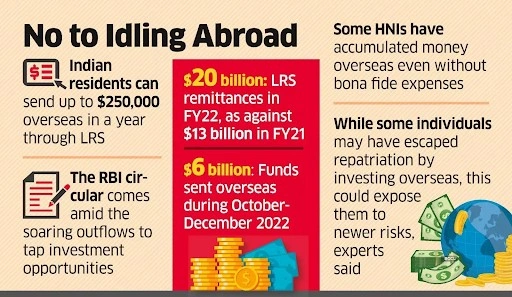
About Liberalised Remittance Scheme (LRS):
- Introduction: LRS is a foreign exchange policy initiative introduced by the RBI in 2004.
- Purpose: It simplifies and streamlines the process of remitting funds outside India, helping Indians overcome international fund transfer restrictions set by the Foreign Exchange Management Act (FEMA), 1999.
- Remittance Limit: Under LRS, all resident individuals, including minors, can freely remit up to USD 250,000 per financial year (April–March).
- Eligibility: Only individual Indian residents can remit funds under LRS. Corporates, partnership firms, HUFs, trusts, etc., are excluded.
- Permissible Transactions: Remittances can be for any permissible current or capital account transaction or a combination of both, and can be made in any freely convertible foreign currency.
Permissible Current Account Transactions under LRS:
- Private visits (other than Nepal and Bhutan)
- Gift or donation, including a rupee gift to a Non-Resident Indian (NRI) / Person of Indian Origin (PIO) who is a close relative
- Emigration
- Overseas business trips
- Medical treatment abroad
- Pursuing studies outside India
- Employment abroad
- Maintenance of close relatives abroad
Permissible Capital Account Transactions under LRS:
- Opening a foreign currency account abroad with a bank outside India
- Purchase of property abroad
- Investments in shares, securities, mutual funds, etc., abroad
- Setting up wholly owned subsidiaries (WOS) and Joint Ventures (JV) abroad for bona fide business, subject to stipulated terms and conditions
- Extending loans in INR to NRIs who are relatives, as defined in the Companies Act, 2013
Restrictions on Remittance Facility under LRS:
- Remittances for prohibited activities such as margin trading, lottery, etc.
- Purchase of Foreign Currency Convertible Bonds issued by Indian Companies in the overseas secondary market
- Trading in foreign exchange abroad
- Capital account remittances to countries identified by the Financial Action Task Force (FATF) as “non-cooperative countries and territories”
- Remittance to individuals and entities identified as posing a significant risk of committing acts of terrorism, as advised separately by the RBI
Frequency of Transactions:
- There is no restriction on the frequency or number of transactions during a financial year.
- The total amount of foreign exchange remitted through all sources in India under LRS during the current financial year should be within the LRS limit specified by the RBI.
Tax on LRS:
- Investments held for over two years are considered long-term capital gains and are taxed at 20% on the total profit.
- Profits from investments held for less than two years are taxed at normal income tax slab rates.
- Under the LRS scheme, a 20% Tax Collected at Source (TCS) applies to remittances exceeding INR 7,00,000, except for education and medical reasons.
- A refund for the deducted TCS can be claimed while filing an income tax return (ITR).
Source: TH
Maharashtra Special Public Security Bill 2024
Why in the news ?
- Recently, The Maharashtra government introduced the Maharashtra Special Public Security Bill, 2024, to address the growing threat of Naxalism in urban areas, particularly through Naxal-affiliated organisations.
- The bill proposes strict penalties, including imprisonment, for individuals who may not be direct members of unlawful organisations.
- Engage in activities such as contributing to, receiving or soliciting aid for, harbouring members of, or promoting or assisting in the meetings of such groups.
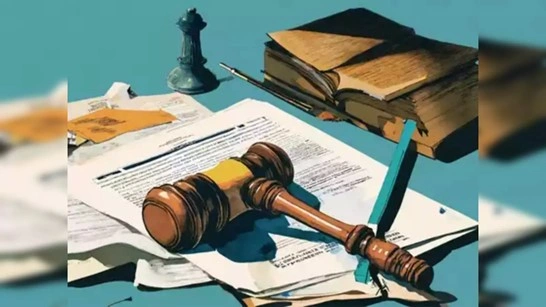
Urban Naxalism:
- About:
- Urban Naxalism refers to the presence and activities of Naxalites or the CPI (Maoist) in urban areas.
- According to the Maoist document ‘Strategy and Tactics of Indian Revolution’:
- Urban movement is a crucial source for providing cadres and leadership essential for the people’s war and the establishment of liberated areas.
- The urban revolutionary movement is responsible for providing supplies, technology, expertise, information, and other support to the people’s war.
- Three Objectives of Maoist Urban Work:
- Mobilising and Organising Masses
- Building United Front (Network of Mass Organisations)
- Military Tasks
- Activities:
- Maintaining safe houses for leaders and cadres while in transit
- Providing places for recuperation and holding meetings
- Providing logistics support to underground squads
- Mobilising and recruiting youth, students, and workers from industries and other bodies
Key Provisions of Maharashtra Special Public Security Bill, 2024:
- Purpose and Scope:
- The bill aims to combat the increasing threat of Naxalism, especially in urban areas, through Naxal-affiliated organisations.
- Declaration of Unlawful Organisations:
- The state can declare an organisation as “unlawful”.
- An advisory board of three qualified individuals (current/former/qualified High Court judges) will review such decisions.
- Definition of Unlawful Activities:
- Activities threatening public order, peace, and tranquillity.
- Interference with law administration and public servants.
- Violence, vandalism, use of firearms, explosives, and disruption of transportation.
- Encouraging disobedience to law and institutions.
- Collecting funds or goods for unlawful activities.
- Cognizable and Non-bailable Offences:
- All offences under the law are cognizable and non-bailable.
- These will be investigated by a police officer not below the rank of a Sub-Inspector.
- Punishments:
- Members of Unlawful Organisations: Imprisonment up to 3 years and fines up to Rs 3 lakh.
- Non-members Contributing or Aiding Unlawful Organisations: Imprisonment up to 2 years and fines up to Rs 2 lakh.
- Management or Promotion of Unlawful Organisations: Imprisonment up to 3 years and fines up to Rs 3 lakh.
- Committing, Abetting, or Planning Unlawful Activities: Imprisonment up to 7 years and fines up to Rs 5 lakh.
- Seizure and Forfeiture:
- If an organisation is declared unlawful, the District Magistrate or Commissioner of Police can notify and take possession of any place used for its activities.
- The government can forfeit money and assets intended for unlawful organizations.
- Legal Review:
- An advisory board must review the declaration of unlawful organisations within six weeks and submit a report within three months.
- The High Court can review government actions through revision petitions.
Source: IE
Divorced Muslim Women's Right to Alimony
Why in the news ?
- Recently, The Supreme Court (SC) ruled in Mohd. Abdul Samad v. The State of Telangana [2024].
- That a divorced Muslim woman is entitled to claim maintenance under Section 125 of the Code of Criminal Procedure (CrPC) 1973, against her former husband. This decision reaffirms that personal laws cannot curtail remedies available under secular laws.
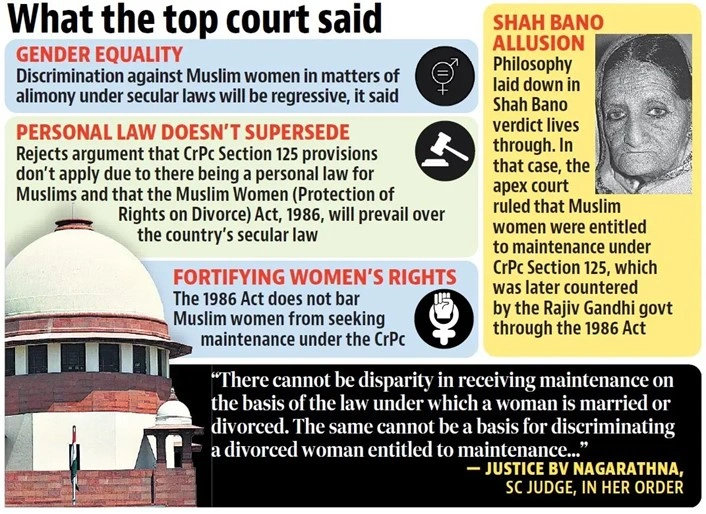
Evolution of the Law of Maintenance in India:
- Section 125 of the CrPC:
- Enacted to provide maintenance for destitute wives, children, and parents.
- Requires individuals with sufficient means to provide a monthly allowance for maintenance as determined by a first-class magistrate.
- Includes women who have obtained divorce and have not remarried, irrespective of their religion.
- The Shah Bano Verdict (1985):
- The Supreme Court upheld the right of Muslim women to claim maintenance from their divorced husbands under Section 125 of the CrPC.
- The Muslim Women (Protection of Rights on Divorce) Act 1986:
- A specific law enacted in response to the Shah Bano verdict.
- Provides a procedure for Muslim women to claim maintenance during divorce.
- Guarantees maintenance payments only during the iddat period, which is typically three months and precedes remarriage.
- The amount equals the dowry given at the time of marriage.
- Allows women to approach a first-class magistrate for maintenance if they have not remarried after iddat.
- Danial Latifi v. Union of India (2001):
- The Supreme Court upheld the constitutional validity of the 1986 Act.
- Extended the right of Muslim women to receive maintenance until remarriage, but restricted it to the completion of the iddat period.
- The Shabana Bano Case (2009):
- Reaffirmed a divorced Muslim woman's right to claim maintenance under Section 125 of the CrPC as long as she remains unmarried.
- Emphasised that this right continues even after the iddat period expires.
SC Verdict in the Mohd. Abdul Samad Case:
- Background:
- A Muslim man challenged a Telangana High Court directive to pay interim maintenance to his former wife.
- He argued that maintenance claims should fall under the 1986 Act, not Section 125 of the CrPC.
- Verdict:
- Purpose of Section 125 CrPC:
- Section 125 CrPC was instituted to uphold social justice and protect the rights of women and children.
- The constitutional commitment under Article 15(3) to ensure dignity for women throughout their lives.
- Uniform Applicability:
- A claim under Section 125 CrPC is maintainable irrespective of the personal laws applicable to the parties involved, emphasising equitable access to legal remedies.
- Non-Dilution Principle:
- The 1986 Act cannot diminish the provisions of Section 125 CrPC.
- Any such attempt would be regressive, particularly affecting divorced Muslim women, and contravene constitutional provisions such as Articles 14, 15(1) and (3), and Article 39(e).
- Purpose of Section 125 CrPC:
Significance of the Verdict:
- Harmonious Legal Interpretation:
- The Court affirmed that Muslim women have the right to choose between applying for maintenance under Section 125 of the CrPC or the 1986 Act, promoting a cohesive interpretation of conflicting legal statutes.
- Deterrence of Illegal Divorce Practices:
- The Court reinforced that Muslim women divorced through illegal means, such as triple talaq, are entitled to maintenance under Section 125 of the CrPC.
- This decision reinforces earlier rulings, including the 2017 declaration of triple talaq as unconstitutional.
- Its subsequent criminalization under the Muslim Women (Protection of Rights on Marriage) Act, 2019.
|
UPSC Civil Services Examination, Previous Year Questions (PYQs) Prelims Q:1 Which Article of the Constitution of India safeguards one’s right to marry the person of one’s choice? (a) Article 19 (b) Article 21 (c) Article 25 (d) Article 29 Ans: (B)
Mains: Q:1 Customs and traditions suppress reason leading to obscurantism. Do you agree?(2020) |
Source: IE
India Advocates Revitalizing BIMSTEC for Greater Impact
Why in the news ?
- India has urged the Bay of Bengal Initiative for Multi-sectoral Technical and Economic Cooperation (BIMSTEC) grouping to inject renewed energies, resources, and a fresh commitment to bolster cooperation among member countries.
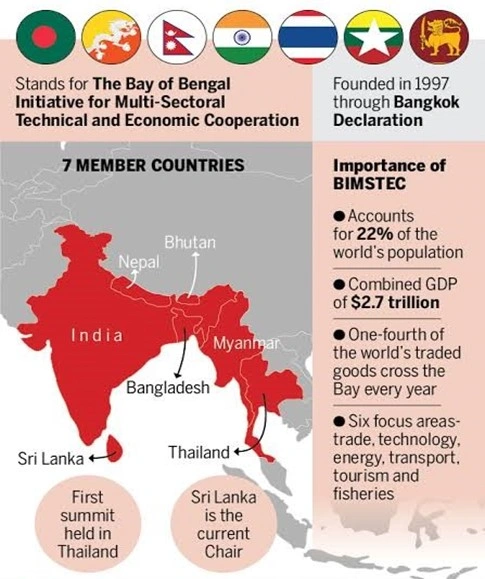
About the BIMSTEC:
- Aim:The Bay of Bengal Initiative for Multi-Sectoral Technical and Economic Cooperation (BIMSTEC) is a regional organisation established in 1997 to foster economic cooperation and technical collaboration among countries bordering the Bay of Bengal.
- Member Countries: Bangladesh, Bhutan, India, Myanmar, Nepal, Sri Lanka, Thailand.
- Objectives: Promote economic growth and development, enhance regional connectivity and integration, and foster cooperation across sectors such as trade, technology, energy, and transportation.
- Priority Sectors: Trade and Investment, Technology, Energy, Transportation, Tourism, Agriculture, Fisheries.
Trade Dynamics:
- Intra-regional trade among BIMSTEC countries exceeds US$40 billion, with potential opportunities reaching up to US$250 billion.
- BIMSTEC countries collectively constitute around 3.8% of global trade, indicating significant potential to impact the global economy.
- Approximately 60% of BIMSTEC's GDP is derived from trade, with India leading exports at 50%, followed by Thailand (30%) and Myanmar (14%).
- Over 40% of intra-regional trade in BIMSTEC is ocean-borne, underscoring the need for enhanced maritime connectivity.
Challenges Facing BIMSTEC:
- Lack of Efficiency and Slow Progress:
- BIMSTEC struggles with inconsistent policy-making, infrequent operational meetings, and insufficient financial and human resources for its Secretariat, hindering effective governance and implementation.
- Limited Intra-Regional Trade and Connectivity:
- The BBIN connectivity project involving Bangladesh, Bhutan, India, and Nepal is still pending finalisation, delaying enhanced regional connectivity.
- Despite signing the Free Trade Agreement (FTA) in 2004, BIMSTEC has only implemented two of the seven necessary constituent agreements, falling short of achieving its trade integration goals.
- Low Regional Trade and Connectivity:
- Despite BIMSTEC's aim to boost economic cooperation, intra-regional trade remains minimal. In 2020, India's trade with BIMSTEC countries constituted only 4% of its total foreign trade, highlighting significant barriers.
- The India-Myanmar border is recognized as "Asia's least open," further impeding regional trade and connectivity.
- Maritime Trade and Fisheries Challenges:
- The Bay of Bengal, renowned for its rich fisheries and coral reefs, faces challenges in sustainable management and combating Illegal, Unreported, and Unregulated (IUU) fishing practices.
- The FAO identifies the Bay of Bengal as a hotspot for IUU fishing in the Asia-Pacific region, necessitating concerted efforts for conservation and regulation.
- Other Inter-State Issues:
- Ongoing challenges include the Rohingya refugee crisis between Bangladesh and Myanmar, unresolved border disputes such as those between India and Nepal, and political instability in Myanmar following the military coup.
Way Forward for BIMSTEC:
- Finalising the BIMSTEC Charter:
- This crucial step will establish a legal framework defining BIMSTEC's purpose, structure, and operations, enhancing stability and predictability in cooperation efforts.
- BIMSTEC Master Plan for Transport Connectivity:
- Finalising a 10-year strategy to improve regional infrastructure (roads, railways, ports, etc.) will boost connectivity, trade, job creation, and facilitate smoother movement of people and goods.
- BIMSTEC Convention on Mutual Legal Assistance in Criminal Matters:
- This agreement aims to enhance cooperation in tackling transnational crime, a significant threat to regional security. It will enable member states to share information and gather evidence, thereby strengthening law enforcement capabilities.
- Implementing Projects like the Bay of Bengal Large Marine Ecosystem (BOBLME) Project:
- Initiatives such as this FAO and GEF project are essential to combat illegal, unreported, and unregulated (IUU) fishing, promoting sustainable fishing practices in the Bay of Bengal region.
- BIMSTEC Technology Transfer Facility (TTF):
- Establishing the TTF in Sri Lanka will bridge technological gaps among member states by facilitating the exchange of knowledge and expertise in critical areas, thereby fostering regional development.
- Cooperation between Diplomatic Academies/Training Institutions:
- Collaborative efforts among diplomatic academies and training institutions will strengthen diplomatic ties and cultivate a shared understanding of regional challenges and opportunities among future leaders.
- Developing Institutional Framework:
- Creating organisational structures akin to the South Asian University (SAU) under SAARC will promote peace, prosperity, and effective governance within BIMSTEC, ensuring sustainable regional development.
- Promoting Citizen Engagement:
- Initiatives like the BIMSTEC Parliamentarians Forum, student exchange programs, and a business visa scheme will enhance mutual understanding, foster closer regional ties, and cultivate a sense of community among member states.
News Summary:
- India's External Affairs Minister S. Jaishankar emphasised the imperative for BIMSTEC to inject new energy, resources, and commitment to deepen cooperation among member nations.
- Discussions during a two-day retreat with counterparts from Bangladesh, Bhutan, India, Myanmar, Nepal, Sri Lanka, and Thailand covered topics including connectivity, trade and business collaboration, health, space cooperation, digital public infrastructure, capacity building, and societal exchanges.
- Jaishankar highlighted that BIMSTEC aligns with India’s 'Neighbourhood First' policy, 'Act East Policy,' and 'SAGAR' vision, focusing on fostering collaboration and realising the region's potential.
Note:
- India’s proactive approach aims to leverage BIMSTEC’s diverse strengths and address existing challenges to enhance regional integration and socio-economic development across the Bay of Bengal region
|
UPSC Civil Services Examination Previous Year Question (PYQ) Mains: Q:1 Do you think that BIMSTEC is a parallel organisation like the SAARC? What are the similarities and dissimilarities between the two? How are Indian foreign policy objectives realised by forming this new organisation? (2022) |
Source: TET
Squalus hima
Why in the news ?
- Recently, Scientists from the Zoological Survey of India (ZSI) have discovered a new species of deep-water dogfish shark named Squalus hima from a fishing harbour in Kerala along the Arabian Sea.

About Squalus hima:
- New Discovery: Squalus hima is a new species of dogfish shark discovered from the southwest coast of India.
- Genus Information: Squalus is a genus of dogfish sharks in the family Squalidae, commonly known as spurdogs. They are characterised by smooth dorsal fin spines.
- Physical Characteristics: These sharks have an angular short snout, a small mouth almost as wide as the snout, a first dorsal fin origin behind the pectoral fins, and a body without any spots.
- Utilisation: They are exploited for their liver oil, which contains high levels of squalene (or squalane when processed for products).
- Pharmaceutical Demand: Squalene is in high demand in the pharmaceutical industry, particularly for making high-end cosmetic and anti-cancerous products.
- Indian Coast Presence: On the Indian coast, two species of Squalus are found from the southwest coast of India. The new species, Squalus hima n.sp., is very similar to Squalus lalannei but differs in many characteristics.
- Distinct Features: The newly discovered Squalus hima differs from other species by the number of precaudal vertebrae, total vertebrae, teeth count, trunk & head heights, fin structure, and fin colour.
Source: TH
Technology Development Fund (TDF) Scheme
Why in the news ?
- Recently, The Defence Research and Development Organisation (DRDO) has sanctioned seven new projects for the private sector under the Technology Development Fund (TDF) scheme.
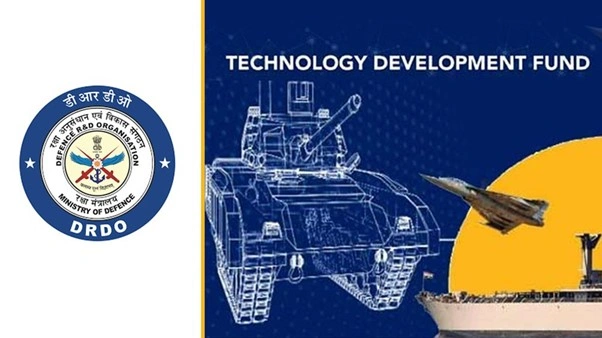
About the Technology Development Fund (TDF) Scheme:
- Objective: The TDF Scheme aims to promote self-reliance in Defence Technology as a part of the 'Make in India' initiative.
- Programme: It is a programme of the Ministry of Defence.
- Execution: This programme is executed by the DRDO to meet the requirements of the Tri-Services, Defence Production, and DRDO.
- Encouragement of Participation: The Scheme encourages the participation of public/private industries, especially MSMEs and startups, to create an ecosystem for enhancing cutting-edge technology capability in the defence sector.
- Benefits: In addition to providing grants-in-aid for the development of indigenous technology, the scheme also provides the industry with various benefits.
Funding Support:
- Project Cost: The project cost of up to INR 50 crore will be considered for funding.
- Funding Proportion: The funding may be up to 90% of the total project cost.
- Collaboration: Industry may work in collaboration with academia or research institutions. The work involvement of academia cannot exceed 40% of the total project cost.
- Funding Linked to Milestones: The funding will be linked to mutually agreed milestones.
- Fund Release: Funds will be released either in advance against a bank guarantee of the same amount as collateral or reimbursement based on the completion of milestones.
- Subsequent Instalments: Subsequent instalments will be released on successful completion of milestones.
- Project Duration: The maximum development period will be four (4) years.
Eligibility:
- Eligible Entities: A public limited company, a private limited company, a partnership firm, a limited liability partnership, a one-person company, or a sole proprietorship registered as per applicable Indian laws registered in India, especially MSMEs and Startups.
- Ownership: The industry must be owned and controlled by a resident Indian citizen.
- Foreign Investment: An entity with an excess of 49 percent foreign investment will not be eligible.
- Startups Recognition: Startups must be recognized by the Department for Promotion of Industry and Internal Trade (DPIIT) as per Government of India (GOI) guidelines.
- Nascent Startups: Startups incorporated for less than three years from the date of submission of application will be considered nascent startups.
- Incubation: A nascent Startup should be incubated at one of the Central/State government-assisted incubators.
- Previous Grants: Startups should not have received any grants/grants-in-aid by any government scheme for a similar technology.
- Ownership of Startups: The startup must be owned and controlled by a Resident Indian citizen with a shareholding of at least 51%.
Source: TH
Dengue
Why in the news?
- Recently, The High Court of Karnataka recently took suo motu cognizance of the rise and spread of dengue across the state.
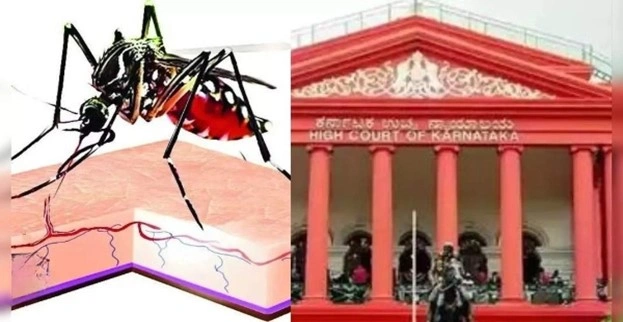
About Dengue:
- Definition: Dengue, also known as break-bone fever, is a mosquito-borne viral infection.
- Prevalence: It is more common in tropical and subtropical climates, mostly in urban and semi-urban areas.
- Severity: While many dengue infections are asymptomatic or cause only mild illness, the virus can occasionally lead to more severe cases and even death.
Transmission:
- Mosquito Vector: Dengue is transmitted to humans through the bite of infected Aedes mosquitoes carrying one of four types of dengue virus (DENV).
- Non-Contagious: Dengue isn’t contagious from person to person except when passed from a pregnant person to their child.
- Global Impact: An estimated 400 million dengue infections occur worldwide each year, with about 96 million resulting in illness.
- Multiple Infections: A person can be infected with dengue multiple times in their life.
Symptoms:
- Common Symptoms: The most common symptoms are high fever, headache, body aches, nausea, and rash. Most people recover in 1–2 weeks.
- Severe Cases: A very small portion of people with dengue fever develop a severe case known as dengue hemorrhagic fever.
- Symptoms of Severe Dengue: Symptoms appear as the fever begins to subside and may include persistent vomiting, rapid breathing, blood in vomit, and bleeding gums.
- Risk Factors: Individuals infected for the second time are at greater risk of severe dengue. In severe cases, dengue can be fatal.
Treatment:
- No Specific Medicine: There is no specific medicine to treat dengue. Treatment focuses on relieving pain symptoms.
- Supportive Care: It is generally treated with supportive care such as pain relievers, bed rest, and fluids.
Source: IE
Exercise Pitch Black
Why in the news ?
- An Indian Air Force (IAF) contingent is participating in Exercise Pitch Black 2024, scheduled to be conducted from July 12, 2024, to August 2, 2024, in Australia.

About Exercise Pitch Black:
- Nature of Exercise:
- Exercise Pitch Black is a biennial and multinational exercise hosted by the Royal Australian Air Force (RAAF).
- Name Origin:
- The name 'Pitch Black' is derived from the emphasis on night-time flying over large unpopulated areas.
- 2024 Edition:
- The 2024 edition is slated to be the largest in the 43-year history of Exercise Pitch Black, with participation by 20 countries, over 140 aircraft, and 4,400 military personnel from various air forces.
- Focus:
- The exercise will focus on Large Force Employment warfare aimed at strengthening international cooperation and facilitating experience enhancement.
- The IAF Su-30 MKI operated alongside the F-35, F-22, F-18, F-15, Gripen, and Typhoon fighter aircraft.
- IAF Contingent:
- The IAF contingent comprises over 150 highly skilled Air Warriors, including pilots, engineers, technicians, controllers, and other subject matter experts.
- They will be operating the formidable Su-30 MKI multirole fighters, with the C-17 Globemaster and the IL-78 Air-to-Air Refuelling aircraft in combat-enabling roles.
- Opportunities:
- The exercise provides the IAF with an opportunity for force integration with participating nations and mutual exchange of best practices.
Significance:
- Strengthening Capabilities:
- The exercise provides an excellent opportunity for strengthening the ability of the participating nations to deploy over large distances.
- Support integrated operations in the Indo-Pacific region, and build strong aviation associations in a highly challenging environment.
Previous Participation of India:
- Historical Participation: The IAF has previously participated in the 2018 and 2022 editions of this exercise.
Source: PIB
India's Renewable Energy Transition
Context:
- India is embarking on an ambitious journey to expand its renewable energy (RE) capacity, aiming for 500 GW by 2030 and potentially 1 TW by 2035.
- This push is driven by the need to meet growing energy demands while transitioning away from fossil fuels to combat climate change.
- As of May 2024, India has achieved an installed RE capacity of 191 GW, including 85 GW of solar power, propelled by initiatives like the National Solar Mission.
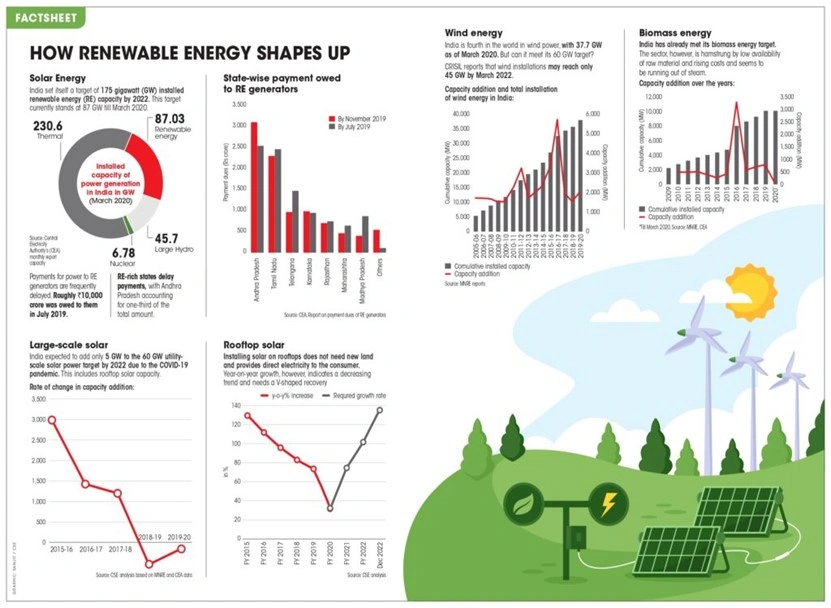
Factors Driving India's Renewable Energy Transition:
- Energy Security and Independence:
- India imports over 80% of its oil needs, exposing it to global price fluctuations and geopolitical tensions.
- Expanding renewable energy reduces this dependence, with solar alone contributing significantly by 2023.
- Economic Competitiveness:
- Solar energy has become cost-competitive with conventional sources. Auctions like Gujarat Urja Vikas Nigam's Phase XI set a record low tariff, driving investments from both public and private sectors.
- Climate Change Commitments:
- At COP26, India committed to reducing carbon emissions by 1 billion tonnes by 2030 and achieving net-zero emissions by 2070.
- The 500 GW non-fossil fuel capacity target for 2030 aligns directly with these goals.
- Job Creation Potential:
- The renewable sector offers substantial employment opportunities, estimated at 3.4 million jobs by 2030 through solar and wind capacity expansions.
- Government initiatives like the PLI scheme for solar modules aim to enhance domestic manufacturing and job creation.
- International Cooperation and Pressure:
- Leadership in the International Solar Alliance and partnerships such as the India-US Clean Energy and Climate Partnership facilitate technology transfer and knowledge sharing, bolstering India's renewable energy efforts on the global stage.
- Water Scarcity:
- Renewables, unlike thermal power plants, alleviate pressure on water resources in water-stressed regions.
- Maharashtra's emphasis on solar power is driven in part by the region's frequent droughts affecting thermal power generation.
- Investor Pressure and ESG Considerations:
- Global investors increasingly prioritise Environmental, Social, and Governance (ESG) factors, prompting Indian entities to accelerate renewable energy adoption.
- India's significant issuance of green bonds underscores this shift towards sustainable investments.
What are the Major Challenges to India’s Renewable Energy Transition?
- Land Acquisition Hurdles:
- Significant land requirements for RE projects, e.g., a 1 GW solar plant needs about 2,000 hectares.
- Recent protests in Rajasthan's Jaisalmer against solar parks encroaching on grazing lands highlight conflicts over development and local rights.
- Stranded Asset Risk and Coal Sector Challenges:
- India has substantial investments in coal-based power plants, with 8 stranded thermal plants as of April 2023.
- Rapid RE transition may increase stranded assets, posing economic challenges, especially in coal-dependent regions like Jharkhand and Chhattisgarh.
- Different skill requirements in the RE sector create a workforce mismatch, notably affecting sectors like Coal India Limited employing over 270,000 people.
- Grid Integration and Stability Issues:
- Increasing RE penetration raises concerns about grid stability.
- Early wind power generation challenges in Tamil Nadu due to grid stability issues, necessitating regulatory measures in states like Gujarat and Tamil Nadu.
- Intermittency and Storage Challenges:
- Variable nature of REsources requires large-scale storage solutions.
- India needs 38 GW of battery storage and 9 GW of thermal balancing power by 2030 for efficient integration of 450 GW of renewables.
- Scaling up storage remains a challenge despite initial steps like Solar Energy Corporation of India's 2021 tender.
- E-waste and End-of-Life Management:
- Massive deployment of solar panels and batteries raises concerns about e-waste management.
- India is projected to be a major producer of solar panel waste by 2050, lacking comprehensive recycling policies despite draft rules from MNRE in 2022.
- Geopolitical Resource Dependencies:
- India's RE transition heavily relies on critical minerals controlled by few countries.
- For instance, China processes 80% of rare earth elements globally, while the Democratic Republic of Congo supplies 70% of mined cobalt, posing vulnerabilities to India's RE supply chain and economic sovereignty.
- Biofuel Land Use Dilemma:
- Ambitious biofuel targets compete with food production, exemplified by increased water-intensive sugarcane cultivation for ethanol production.
- Creates a complex challenge at the nexus of food, water, and energy, especially in water-stressed states like Maharashtra.
- Climate Change Impacts on RE Infrastructure:
- Climate change poses risks to RE infrastructure, such as increased cyclone frequency threatening offshore wind projects.
- Changing precipitation patterns impact hydropower potential, as evidenced by the 2021 Uttarakhand floods damaging multiple hydro projects.
- Urban Planning and RE Integration:
- Rapid urbanisation complicates RE integration, illustrated by inconsistent building codes for rooftop solar across Indian cities.
- Limited open spaces in dense urban areas hinder large-scale RE projects, as seen in Mumbai's challenges with solar adoption.
What are the Major Government Initiatives Related to Renewable Energy Transition?
- Pradhan Mantri Sahaj Bijli Har Ghar Yojana (SAUBHAGYA):
- Objective: To provide electricity connections to all households in rural and urban areas.
- Implementation: Launched in September 2017, the scheme aims to achieve universal household electrification.
- Impact: As of March 2022, over 2.8 crore households have been electrified under SAUBHAGYA.
- Green Energy Corridor (GEC):
- Objective: Facilitate the grid integration of renewable energy sources (RES) through dedicated transmission lines.
- Scope: Aims to create a robust and reliable renewable energy transmission infrastructure.
- Progress: Several GEC projects are underway across different states to strengthen RES integration.
- National Smart Grid Mission (NSGM) and Smart Meter National Programme:
- Objective: Modernise the electricity grid to enhance efficiency, reliability, and resilience.
- Components: NSGM focuses on smart grid deployment, while the Smart Meter National Programme aims to replace conventional metres with smart metres.
- Implementation: Both initiatives are crucial for managing peak loads and integrating renewable energy effectively.
- Faster Adoption and Manufacturing of (Hybrid &) Electric Vehicles (FAME):
- Objective: Promote the adoption of electric and hybrid vehicles to reduce vehicular emissions.
- Incentives: Provides subsidies and incentives for electric vehicle (EV) buyers and manufacturers.
- Phases: FAME India has been implemented in phases, with FAME II launched in 2019 to further boost EV adoption.
- International Solar Alliance (ISA):
- Objective: Facilitate cooperation among solar-rich countries to harness solar energy.
- Formation: Launched jointly by India and France in 2015, it aims to reduce dependence on fossil fuels and promote solar power globally.
- Membership: It has over 90 member countries and aims to mobilise more than USD 1 trillion in solar investment by 2030.
- Surya Ghar Muft Bijli Yojana:
- Objective: Provide solar-powered lighting and clean cooking solutions in rural households.
- Implementation: Implemented by the Ministry of New and Renewable Energy (MNRE) to promote solar energy usage.
- Impact: Aims to reduce dependence on traditional fuels and improve energy access in remote areas.
What Measures can India Adopt to Ensure a Smoother Transition to Renewable Energy?
- Floating Solar Revolution:
- Develop large-scale floating solar projects on reservoirs and coastal areas to maximise RE capacity without land use conflicts.
- Integration with hydroelectric infrastructure enhances energy output.
- Land Leasing Revolution:
- Implement long-term land leasing programs for solar farms, allowing farmers to retain ownership and earn from RE projects.
- Agrivoltaic systems can enable dual land use for agriculture and solar energy.
- Renewable Energy Special Economic Zones (RE-SEZs):
- Establish dedicated zones with streamlined regulations and incentives to attract global RE companies.
- Foster end-to-end ecosystems for RE manufacturing and R&D, boosting domestic supply chain and economic growth.
- Workforce Transition From Coal to Clean Energy:
- Launch a "Green Collar" initiative to retrain coal sector workers for RE jobs.
- Establish RE manufacturing hubs in coal-dependent regions with phased transition plans for workforce adaptation.
- Blockchain-Powered Decentralised Energy Trading:
- Implement peer-to-peer energy trading using blockchain to enable prosumers to sell excess energy.
- Enhance grid flexibility, incentivize small-scale RE adoption, and reduce transmission losses.
- Vertical Axis Wind Turbines (VAWTs) for Urban Environments:
- Promote VAWTs in cities to tap urban wind energy potential. Integrated into urban infrastructure, they minimise visual and noise impacts, diversifying India's urban RE mix alongside rooftop solar.
- Green Hydrogen Highways:
- Establish green hydrogen production and distribution centres along major transport corridors.
- Use excess renewable energy for hydrogen production to fuel hydrogen-powered vehicles, addressing storage and decarbonization challenges.
- Solar Thermal Oases:
- Develop CSP plants in arid regions integrated with greenhouse agriculture.
- Use excess heat for desalination and year-round cultivation of high-value crops, addressing energy, water, and food security.
- Waste-to-Energy Circular Parks:
- Create integrated waste management and energy production facilities using technologies like anaerobic digestion and gasification.
- Generate energy for the grid and biochar for agriculture, transforming waste management into a resource-generating system
|
UPSC Civil Services Examination, Previous Year Question (PYQ) Prelims Q:1 With reference to the Indian Renewable Energy Development Agency Limited (IREDA), which of the following statements is/are correct? (2015)
Select the correct answer using the code given below: (a) 1 only (b) 2 only (c) Both 1 and 2 (d) Neither 1 nor 2 Ans: (c)
Mains Q.1 “Access to affordable, reliable, sustainable and modern energy is the sine qua non to achieve Sustainable Development Goals (SDGs)”.Comment on the progress made in India in this regard. (2018) |
Source: FE
Share the article
Edukemy’s Current Affairs Quiz is published with multiple choice questions for UPSC exams
MCQ
Get Latest Updates on Offers, Event dates, and free Mentorship sessions.

Get in touch with our Expert Academic Counsellors 👋
FAQs
UPSC Daily Current Affairs focuses on learning current events on a daily basis. An aspirant needs to study regular and updated information about current events, news, and relevant topics that are important for UPSC aspirants. It covers national and international affairs, government policies, socio-economic issues, science and technology advancements, and more.
UPSC Daily Current Affairs provides aspirants with a concise and comprehensive overview of the latest happenings and developments across various fields. It helps aspirants stay updated with current affairs and provides them with valuable insights and analysis, which are essential for answering questions in the UPSC examinations. It enhances their knowledge, analytical skills, and ability to connect current affairs with the UPSC syllabus.
UPSC Daily Current Affairs covers a wide range of topics, including politics, economics, science and technology, environment, social issues, governance, international relations, and more. It offers news summaries, in-depth analyses, editorials, opinion pieces, and relevant study materials. It also provides practice questions and quizzes to help aspirants test their understanding of current affairs.
Edukemy's UPSC Daily Current Affairs can be accessed through:
- UPSC Daily Current Affairs can be accessed through Current Affairs tab at the top of the Main Page of Edukemy.
- Edukemy Mobile app: The Daily Current Affairs can also be access through Edukemy Mobile App.
- Social media: Follow Edukemy’s official social media accounts or pages that provide UPSC Daily Current Affairs updates, including Facebook, Twitter, or Telegram channels.

